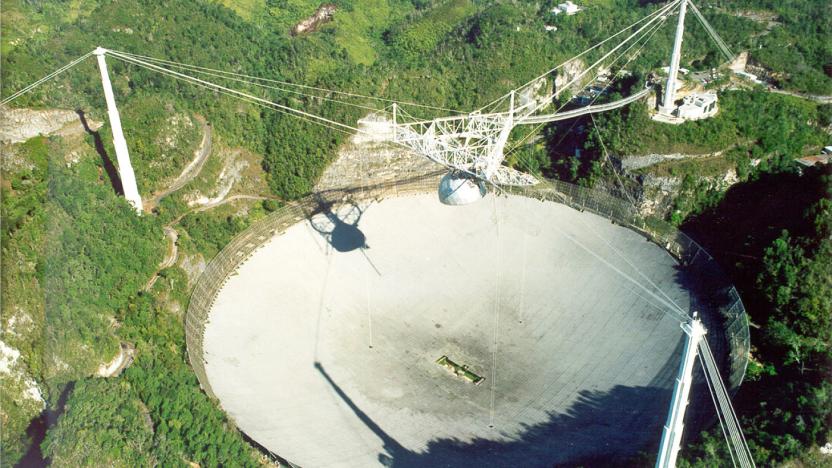NearEarthObject
Latest

Arecibo is monitoring potentially hazardous near-earth asteroid
The iconic Arecibo radio telescope has faced quite a few challenges over the last ten years, including budget cuts, a funding crisis and damage from Hurricane Maria. While it may not be the largest radio telescope in the world anymore (that honor belongs to Russia's RATAN-600), Puerto Rico's device is still an important asset for detecting dangers to our planet. It's good news, then, that the telescope is up and running again to be able to check out near-Earth asteroid 3200 Phaethon.

Researchers find 12 easily captured near-Earth asteroids
Both NASA and Planetary Resources dream of capturing asteroids, but they need viable targets -- many space rocks aren't easily moved. The University of Strathclyde just gave those organizations some help by identifying 12 near-Earth asteroids that are relatively easy to catch. All of them would require velocity changes of less than 1,640 feet per second to fall into orbit around Earth's Lagrangian points, where the gravity balance would let miners and researchers get to work. Don't expect intercept missions anytime soon, though. One of the more accessible targets, 2006 RH120, would have to be nudged in February 2021 to reach orbit in 2026; it will be a long while before any of us sees an asteroid up close.

Trojan asteroid caught circling Earth, the Greeks deny involvement
Hide your kids, hide your wife, there's an asteroid circling Earth's orbit and we're all gonna... be just fine? Yeah, no need to stock up those '60s fallout shelters folks, this approximately 1,000 feet wide space rock is sitting pretty and safe in one of our Lagrange points. The so-called Trojan asteroid, known as 2010 TK7, was uncovered 50 million miles away by the infrared eyes of NASA's Wide-field Infrared Survey Explorer (WISE) telescope, and is the first of its kind to be discovered near our humble planet. Typically, these near-Earth objects (NEOs) hide in the sun's glare, but this satellite's unusual circuit around our world helped WISE and the Canada-France-Hawaii telescope confirm its existence. The finding has our best and brightest giddy with the hope similar NEOs "could make excellent candidates for future robotic or human exploration." Unfortunately, our new planetoid friend's too-high, too-low path doesn't quite cut the space mission mustard. No matter, 2010 TK7 still gets to call "First!"

DigitalSpace shows off proposed asteroid mission plans
It's already considered sending various types of robots to asteroids, but NASA apparently still has plenty more plans for dealing with near-Earth objects (or NEOs), with it recently asking Santa Cruz-based DigitalSpace Commons to develop a simulation for a manned mission. The company's plans, officially unveiled today, are based on NASA's own Constellation exploration crew vehicle, which the space agency developed for lunar missions but says can be modified for trips to NEOs. As CNET reports, DigitalSpace's planned modifications include a system that would anchor the spacecraft "like a boat in a harbor," along with a ring of sensor-equipped airbags that would detect stability on the ground. While NASA isn't saying exactly when it might attempt such a mission, DigitalSpace says it believes one could be done as soon as 2017.



